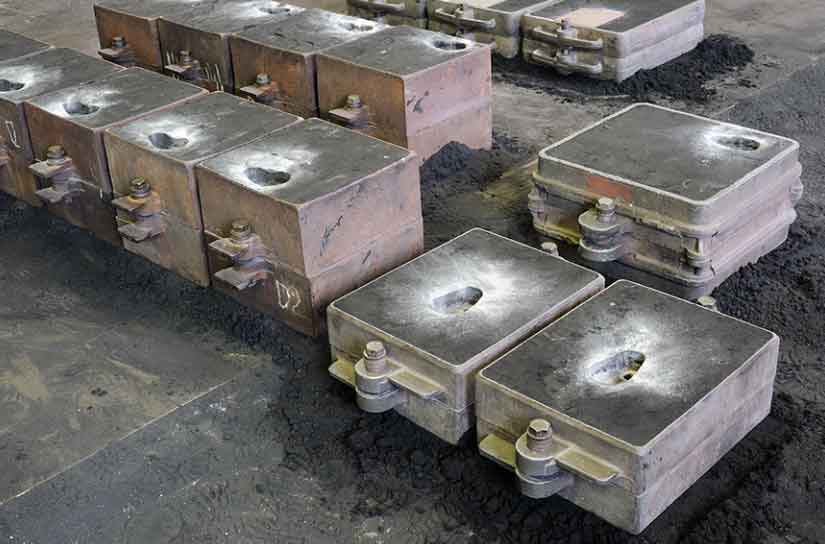Optimizing resin sand casting for cost-effective manufacturing involves several key considerations. Here are some strategies and techniques that can help achieve cost savings in resin sand casting processes:

- Design optimization: Efficient and cost-effective resin sand casting starts with well-designed parts. Design for manufacturability (DFM) principles should be applied to ensure that the part can be easily produced using resin sand casting methods. Reducing complex features, minimizing undercuts, and incorporating draft angles can simplify the casting process and reduce costs.
- Material selection: Choosing the right resin for sand casting is crucial for cost optimization. Resins with good flow properties, high dimensional stability, and minimal shrinkage can reduce material waste and improve overall casting quality. It’s important to consider both the initial material cost and its impact on the casting process when selecting a resin.
- Tooling design and optimization: The design and fabrication of the casting tooling, such as the pattern or mold, can significantly impact cost-effectiveness. Optimize the tooling design to reduce material waste, improve production cycle times, and minimize tooling maintenance requirements. Using standardized tooling components or reusable patterns can also help reduce costs in the long run.
- Process optimization: Analyzing and optimizing the resin sand casting process itself can lead to cost savings. Consider factors such as cycle times, curing temperatures, resin-to-sand ratios, and curing times. By optimizing these parameters, it’s possible to increase production throughput, reduce energy consumption, and minimize scrap rates.
- Quality control: Implementing effective quality control measures throughout the resin sand casting process is vital to reduce costs associated with rework, scrap, and defective parts. Regular inspection and testing can help identify and address issues early on, minimizing waste and reprocessing.
- Supplier collaboration: Collaborating closely with suppliers and manufacturers can help identify cost-saving opportunities. Discussing material options, process improvements, and tooling modifications with experienced suppliers can lead to innovative solutions and potential cost reductions.
- Automation and robotics: Incorporating automation and robotics into the resin sand casting process can improve productivity and reduce labor costs. Automated systems can handle repetitive tasks, enhance process control, and reduce the risk of human error. However, the cost of implementing automation should be carefully evaluated against the potential benefits.
- Lean manufacturing principles: Applying lean manufacturing principles, such as just-in-time (JIT) inventory management, waste reduction, and continuous improvement, can streamline the resin sand casting process. By eliminating non-value-added activities and optimizing material flow, lean principles can lead to cost savings and increased efficiency.
Remember that optimizing resin sand casting for cost-effective manufacturing is a continuous improvement process. Regular evaluation of the production system, collaboration with suppliers, and ongoing monitoring of key performance indicators can help identify further opportunities for cost reduction and process improvement.
